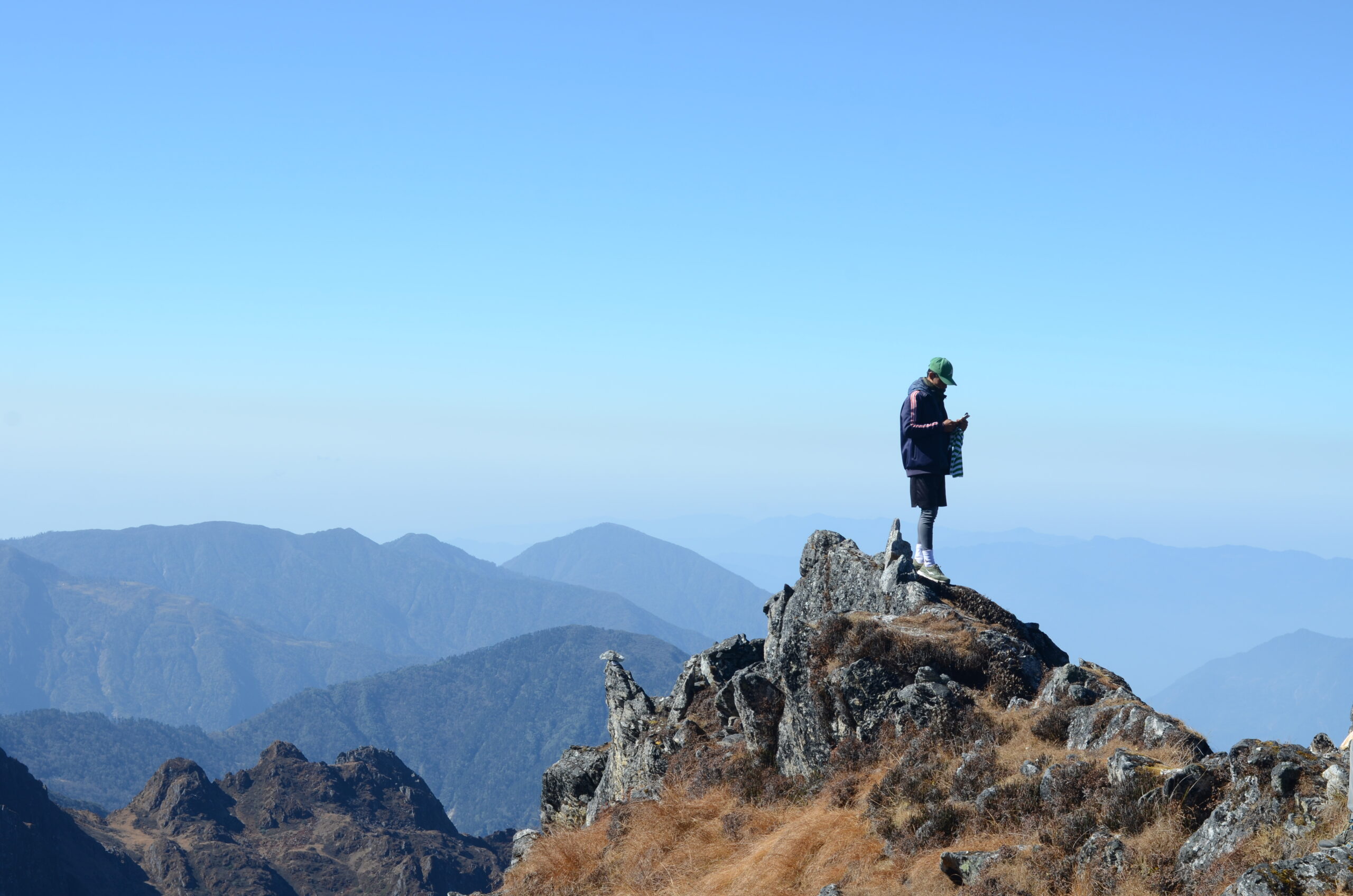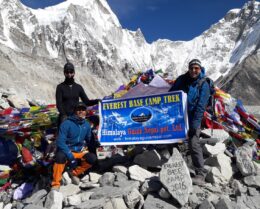Kanchenjunga Circuit Trek Difficulty: Expert Guide and Tips
PUBLISHED ON 18 April, 2024
Going up Mt. Kanchenjunga, the third highest peak in the world at 8,586 meters, is Nepal’s extremely rarely traveled hiking route. Trekking on the difficult trails of the Kanchenjunga Circuit Trek is an amazing experience! so let’s discuss the Kanchenjunga Circuit Trek Difficulty in detail.
Trekking routes that have not yet been visited take you through vibrant towns, strange woodlands, flowing waterfalls, and the incredible beauty of nature. Experiencing nature and tasting the fresh air in the Kanchenjunga Conservation area is a wonderful experience.
Enjoy a sense of joy as you see the lives of numerous rare wild animals, including black bears, musk deer, blue sheep, red pandas, and snow leopards. The mysterious “Yeti” creature that lives in the snow is another fascinating detail about Kanchenjunga.
How difficult is Kanchenjunga Circuit Trekking?
Nepal’s Kanchenjunga circuit is rated as a challenging trekking destination. This is not an easy trek. Difficulty implies you have to traverse several mountain passes with challenging ascents and descents.
This hike is challenging as well because of how long it takes to complete. For over three weeks, you will be strolling through little towns in the countryside.
It takes a difficult trek to reach the peak elevation of 5,150 meters, which requires crossing multiple mountain passes. To persevere, you need to possess immense patience and perseverance. Otherwise, it is very exhausting to travel across challenging passes, untamed glacier rivers, isolated forests, and mountainous terrains!
Before visiting Kanchenjunga, one must obtain a restricted area trekking permission from the Nepali government. You are unable to proceed there. You have to travel with an authorized professional guide.
Although challenging, this hike is not unachievable. With a strong sense of determination and well-thought-out strategies, anything is possible. Success is not solely determined by what you do.
You have to use the appropriate firm with a qualified crew and guide. Reach out to us. We are a well-known trekking company in Nepal that has been leading tours and treks in all regions of the country safely.
Which of the Two Routes to Kanchenjunga is Harder?
There are numerous hiking paths leading to Kanchenjunga. The northern and southern trekking routes. However, these are the two most well-traveled paths to reach the Kanchenjunga base camp. However, you will need to take both of these paths for the Kanchenjunga Circuit Trek.
You can visit either of the two base camps—the Kanchenjunga South Base Camp trek or the Kanchenjunga North Base Camp trek—if you just want to take a quick excursion. The two treks offer breathtaking scenery. The trekking route to the northern base camp is more difficult than the southern one, nevertheless, in terms of difficulty.
At 4,785 meters, Pang Pema is the highest point on the Kanchenjunga North Base Camp Trek. On the other hand, the Kanchenjunga South Base Camp Trek reaches the summit at 4,160 meters.
Factors Increasing Difficulty in the Kanchenjunga Circuit Trek
Distance
The distance is the first issue that makes the Kanchenjunga circuit trek difficulty. Around 200 kilometers are covered by the Kanchenjunga circuit to and from Taplejung. The journey to the base camp of Kanchenjunga takes about three weeks.
From Taplejung, it takes around two weeks to get to either base camp. This covers two days of relaxation at Kambachen and Ghunsa. The walking distance is about 9 to 11 kilometers every day.
While the Kanchenjunga journey takes less time each day than the Everest Base Camp trek, the total number of days required for this trek is double that of an average Everest base camp expedition.
Elevation
When you land in Kathmandu, you already ascend 1300 meters if you are coming from sea level. Flying to Taplejung, 1400 meters, is part of the Kanchenjunga Trek.
Lower oxygen levels are seen at higher elevations. When walking in Nepal’s Himalayas, bear this in mind above everything else. There would be an approximate daily gain of 400 to 500 meters while walking up Kanchenjunga. Your body will need to adjust to a lower level of oxygen due to the gain.
It could be difficult for your body to adjust to the new oxygen levels if you have never been to a high altitude. Don’t worry, though; begin doing some cardio workouts a few months before your hike.
While climbing Mount Kanchenjunga, there isn’t a significant elevation gain. Your body will adjust more easily as a result of this. But you have to exercise extreme caution.
Camping
Trekking up Kanchenjunga involves camping. On the Kanchenjunga trekking trail, there are no regular teahouses because of the trek’s remote location. You will therefore have to stay in camps in areas without teahouses.
It’s fun to go camp hiking. But running a camp while trekking is challenging. Additional crew members are needed to assist with carrying everything—tents, food, gas grills, etc.
Weather & Temperature
The Kanchenjunga trekking trail passes through several high-altitude areas. Weather fluctuations are common at high elevations. A variety of hazards will become apparent when the weather deteriorates.
Among these are the potential for landslides, rock slides, and slick surfaces, among many others. Trekking in inclement weather is difficult.
Even when the weather is steady and pleasant at lower elevations, this does not guarantee that it will be the same higher up. The best months to trek the Kanchenjunga are April, May, September, October, and November. Even at higher elevations, the weather is generally excellent during these months. The likelihood of precipitation, snowfall, and strong winds is reduced.
However, it may rain at any moment or sometimes. Additionally, it will always be cold during the nights and mornings at higher elevations. Before deciding to trek, exercise caution and stay informed about the weather in the Kanchenjunga circuit.
How to Handle Challenging Conditions on the Kanchenjunga Circuit Trek?
Monitor your health
You should check on your health while walking, preferably twice a day. Verify that you are feeling well. Additionally, confirm that everything in your area is in order. Find out from your buddies if they are nice or bad.
Drink plenty of safe drinking water
You must stay hydrated when trekking on Kanchenjunga. A well-hydrated body reduces the chance of experiencing altitude sickness. We recommend two to three liters of water every day for you.
Bring your reusable water bottle with you, ideally one that has a filter. On the path, drinking tainted water is not hygienic. Thus, you should also bring tablets that filter water. Before consuming your water, filter it.
Acclimatize properly
Being acclimated is essential for success. On high-altitude excursions, gaining greater height in a single day is not safe. Even if you feel good physically and psychologically, be careful not to try to push yourself too far.
On the walk, there are several locations where you need to stop and rest. You ought to go on an acclimatization hike on the days off. Your body can adjust to decreasing oxygen levels by sleeping low at night and reaching highs during the day. Stay on the acclimatization schedule at all times.
Pack adequate gears
This is not a one- or two-week trek. You’ll be staying in one of the most isolated areas of Nepal for more than three weeks. If you neglect to get something on your own, you won’t find anywhere to buy it on the trail.
Making lists of the items you’ll need is therefore necessary before you leave. Carefully pack each one of them. Add anything necessary. Aim to omit items that are unneeded and will merely add weight.
When to Do Kanchenjunga Trekking?
Autumn and spring are the busiest seasons for trekking the Kanchenjunga, just like they are for most other well-known trekking routes in Nepal. Kanchenjunga trekking involves camping. Therefore, good weather is essential for hiking this route.
In Kanchenjunga, autumn (September, October, and November) is the ideal hiking season. Thousands of hikers from all over the world pour onto Nepal’s trekking routes during this time of year.
The weather is most consistent and the skies are clearest in the autumn. The greatest air quality is still experienced in the fall. The ideal time to hike is when the weather and temperature are still mild and consistent. In addition, the low likelihood of snow and rain during this season contributes to its popularity.
After autumn, spring (March, April, and May) is the most popular time of year for trekking. Nature enthusiasts should use this opportunity. The Kanchenjunga trekking trail is blanketed in vibrant wildflower blooms. The national flower of Nepal, the rhododendron, is visible in a variety of colors.
Spring brings with it predictable weather in addition to the alluring views of verdant hills and vibrant forests. Furthermore, even at greater elevations, the temperature is temperate. The sky is blue, and there is excellent visibility.
Trekking in the Kanchenjunga during the busiest times of the year is a wonderful option. You will enjoy traveling over deserted routes in Kanchenjunga since this trek is less well-known than climbs to Everest and the Annapurna region.
Permits for Kanchenjunga Circuit Trek
In Nepal, the Kanchenjunga trekking region is restricted. On this journey, we will also venture within the boundaries of the Kanchenjunga Conservation Area. Therefore, you will need both the Kanchenjunga Conservation Area Project Entry Permit and the Restricted Area Permit to hike in Kanchenjunga.
It is difficult to obtain permission for a restricted location. The requirements set forth by the government of Nepal must be met. It is not possible to trek Kanchenjunga alone.
A minimum of two trekkers per group is required to secure the restricted area permit. The next step is to employ a qualified and experienced guide. You are now able to apply for the license.
Conclusion
Trekking through the Kanchenjunga Conservation Area presents a thrilling adventure amidst breathtaking landscapes and diverse wildlife. The journey begins from the eastern part of Nepal, where the majestic Mount Kanchenjunga reigns supreme.
As trekkers ascend to higher elevations, the weather conditions fluctuate, demanding preparation and adaptability. The trek itinerary carefully navigates through the rugged terrain, leading adventurers to iconic landmarks like the Sinion La and the North Base Camp.
Amidst the challenges, the rewards are plentiful, from encountering elusive red pandas to experiencing the euphoria of reaching the summit. By day 14 of the trek, amidst the awe-inspiring vistas of the Himalayas, trekkers find themselves transformed by the beauty and challenges of the Kanchenjunga Base Camp Trek.
However, the allure of reaching Kanchenjunga’s South Base Camp comes with risks, including altitude sickness and acute mountain sickness. Trekking at such high altitudes requires vigilance, with trekkers monitoring their oxygen levels using pulse oximeters.
You May be Interested In the Following List.




